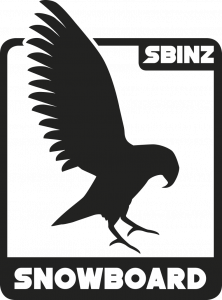Reading Advanced Terrain
Often there will be more than one of these to contend with and in areas where trees are present it is not uncommon to have to deal with all in a single run. Snow conditions in advanced terrain will also need to be carefully considered before deciding on an appropriate approach to riding it.
Steeps & Chutes
Steep terrain can be found on and off trail and is usually defined by a black diamond. When we think of steep terrain that advanced riders are on, it is usually in excess of 30 degrees in pitch. Chutes are a more challenging example of steep terrain as there can be limited space to turn in narrower chutes. Steep terrain can add another layer of potential danger and complexity with the heightened risk of avalanche and terrain traps, particularly in off-trail situations. For this reason particular attention should be put on checking snow reports and having awareness of current snow conditions when applying SCOPE.
When dropping in and making the first turn, it is important to commit fully to the turn. Use of strong steering movements and smaller closed turns is vital for speed control. Spend time developing the required skills on steep groomed terrain before heading to steep off-trail sections.

Bumps
Bumps are formed through days and weeks of skiers and boarders riding un-groomed terrain. Like people they come in many sizes, shapes and ages. They can be small 20cm-high bumps formed that day in slushy snow, to monsters the size of an old Volkswagen Beetle that has taken the better part of a season to form. They can be fairly consistent in size, shape and spacing or totally erratic and all over the place.
To efficiently tackle larger bumps the advanced rider will need to develop solid skills in different turn types, in particular the terrain unweighted turn. Being warmed up is important as much larger ranges of movement may be required, as well as potential lactic acid build up in the legs and fatigue.

Trees
Trees can be a very fun and exciting environment to ride in and come in a variety of sizes and types depending on country, location, aspect and altitude. Some are deciduous like Birch with no leaves in winter meaning there is better visibility through the trees, others like pine trees are evergreen and can restrict vision. Spacing of trees needs to be constantly assessed to make sure there are gaps to ride through.
As fun as they are, trees come with heightened risks of collision injury and getting lost. Riders entering these areas should start with well-spaced trees on easier green and blue pitches and should never ride these areas alone. In areas of higher snowfall tree wells present another, often unseen hazard.

Gullies
Gullies offer some really fun and adventurous line choices when riding off-trail and can be likened to natural halfpipes. They come in all sorts of shapes and sizes, narrow, wide, shallow and deep. Their path often winds and twists on flatter terrain and tends to be straighter on steeper terrain. This is due to the way they were created and formed over thousands of years of water eroding the land into streams and rivers.
While gullies create amazing riding options, they can also be riddled with unseen hazards. Gullies are river/stream beds that may still have water flowing beneath the snow surface, particularly in early and late winter. There may be unseen waterfall drops or broken branches or debris across the path of the gully. They are also well known as being potential terrain traps in an avalanche. A well-rounded ability to utilise different turn types and react quickly helps advanced riders get the most out of this super fun environment.

Drops, Spines & Wind-lips
These features help make the mountains a natural freestyle playground for advanced riders. From dropping off cliffs and cornices, to slashing or sending it off spines and wind lips, the possibilities and variations of these natural formations are endless. Every season will be different in the way that these features hold snow and form, this adds to the unique and constantly changing landscape of amazing terrain on offer.
With this exciting terrain comes some very serious safety concerns. The size of cliffs and cornices, the pitch or unseen hazards in the landing zones and unstable snow packs often found along spines, cornices and wind-lips. If an area is new or unfamiliar, careful planning and observation may be required before heading into or sending it off of areas that are higher risk.


